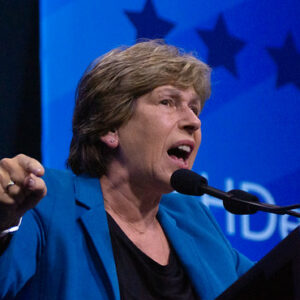According to an analysis of campaign finance records, government unions place a significant premium on political activism than on representing their members.
This is particularly true in the case of the National Education Association, AFSCME and their local affiliates.
Public employees who fund this political activism with their dues might want to ask some hard questions about how their public policy views square with the agenda of their union leaders. If, for example, they support a wide range of public and private educational options for parents and students, chances are their union leaders are using their union dues to block reform measures they favor.
National School Choice Week provides teachers a platform to assess if their unions have effectively advanced their professional interests and bettered workplace conditions. Parents with K-12 students and who belong to government unions also have a vested interest in learning how often their education goals align with their union’s political spending.
Some key figures from Department of Labor data highlight the political activities funded by membership dues. The latest numbers show NEA spent $50.1 million on politics versus $39.3 million on representational activities.
Meanwhile, AFSCME spent $60 million on politics compared to $34.3 million on representation. The American Federation of Teachers, another key player in union political activism, paid $93 million on representational activities versus about $47 million on political activism.
What about the local affiliates in Pennsylvania? On the surface, the ratios appear more balanced. However, a sizable percentage of union dues fund political activism that parents and teachers do not necessarily support. The Pennsylvania State Education Association spent $14.8 million on representation versus $5 million on political activities. In comparison, AFSCME Local 13 spent $6.3 million on representation versus $408,406 on political activism.
The only outlier on the list is AFT Pennsylvania, which spent $94,821 on representational activities and claims to have spent no money on political activism. Even assuming that’s true locally, AFT union members nationwide are footing the bill for political campaigns that crowd out their workplace concerns.
The Commonwealth Foundation, a free-market think tank, found government unions directed less than 20 percent of all dues expenditures toward representational activities.
So, what about the rest?
After examining the spending of the four largest government unions (namely, NEA, AFT, AFSCME and SEIU), the foundation found government unions collectively spent more than $406 million of their membership dues on political activities. According to the foundation’s report, membership dues funded about 60 percent of union political spending in the 2021-22 election cycle.
But some public employees have had enough and are combating unions’ misplaced priorities in court.
In one high-profile case in Connecticut, John Grande, a public school physical education instructor, won an unfair labor practice charge against the Hartford Federation of Teachers. The union had declined to arbitrate Grande’s grievance because he was not a union member.
With assistance from the Fairness Center, a public interest law firm in Pennsylvania, Grande ultimately prevailed. The Connecticut labor board concluded that the union illegally discriminated against Grande because he was not a union member. Their decision bolsters the right to fair representation for all Connecticut public employees. Yet, it does not solve the problem of the teachers unions prioritizing politics over their primary responsibility of representation.
Grande balked when the Hartford Public Schools held a mandatory professional development training described as “Identity & Privilege” on Zoom, which he views as an effort by administrators to coerce critical race theory onto the school district.
But shouldn’t the local teachers union also be working to secure Grande’s free speech rights? Isn’t that part of their job?
That’s why the Fairness Center is pursuing a federal lawsuit on behalf of Grande that alleges the school district violated his First Amendment rights. The firm has represented other teachers and public employees in Pennsylvania who object to their union officials’ political agenda.
The growing disparity between the interests and policy preferences of rank-and-file public employees and their union leaders is at least partly responsible for the recent success of the school choice movement. Despite all the money and organization government unions have poured into obstructing reforms that create new public and private school options, school choice advocates continue to gain ground.
For instance, 13 states offer Education Savings Accounts, according to EdChoice, a nonprofit that favors a wide range of education reforms. ESAs enable parents to receive a portion of their tax dollars back through restricted-use savings accounts that cover private school tuition, tutoring services, instructional materials and other education services.
Perhaps the great takeaway from School Choice Week is that unions are beginning to experience diminishing returns on their investments against educational freedom.

